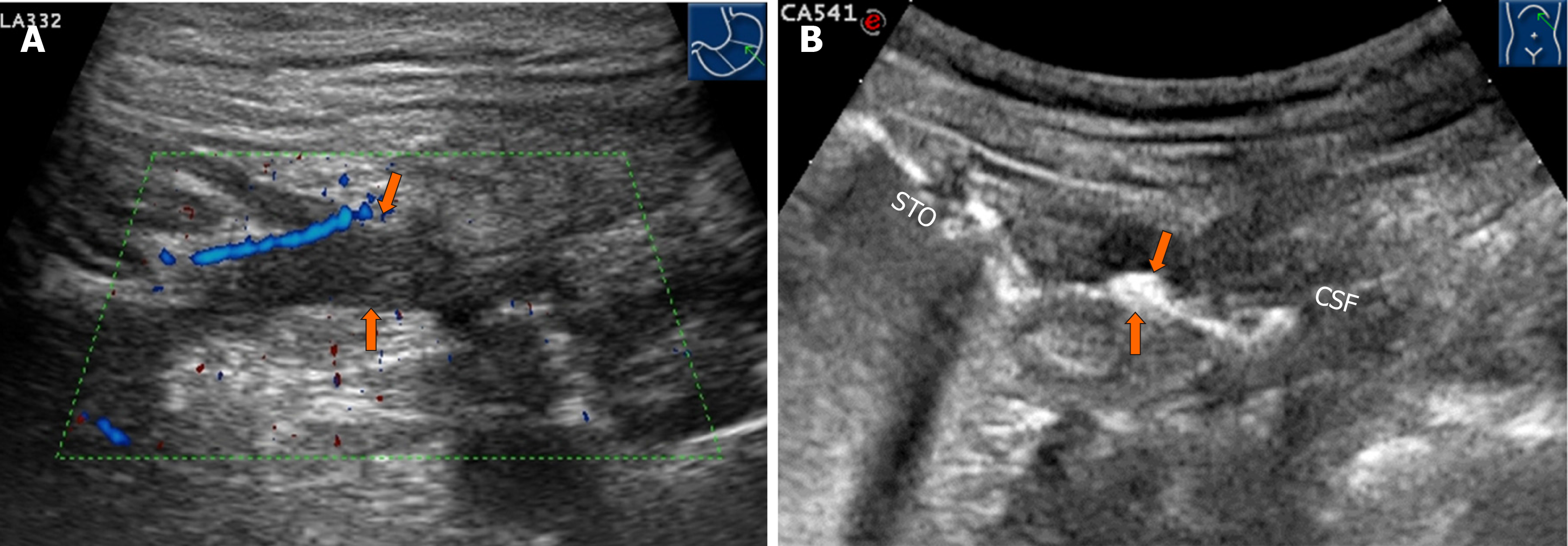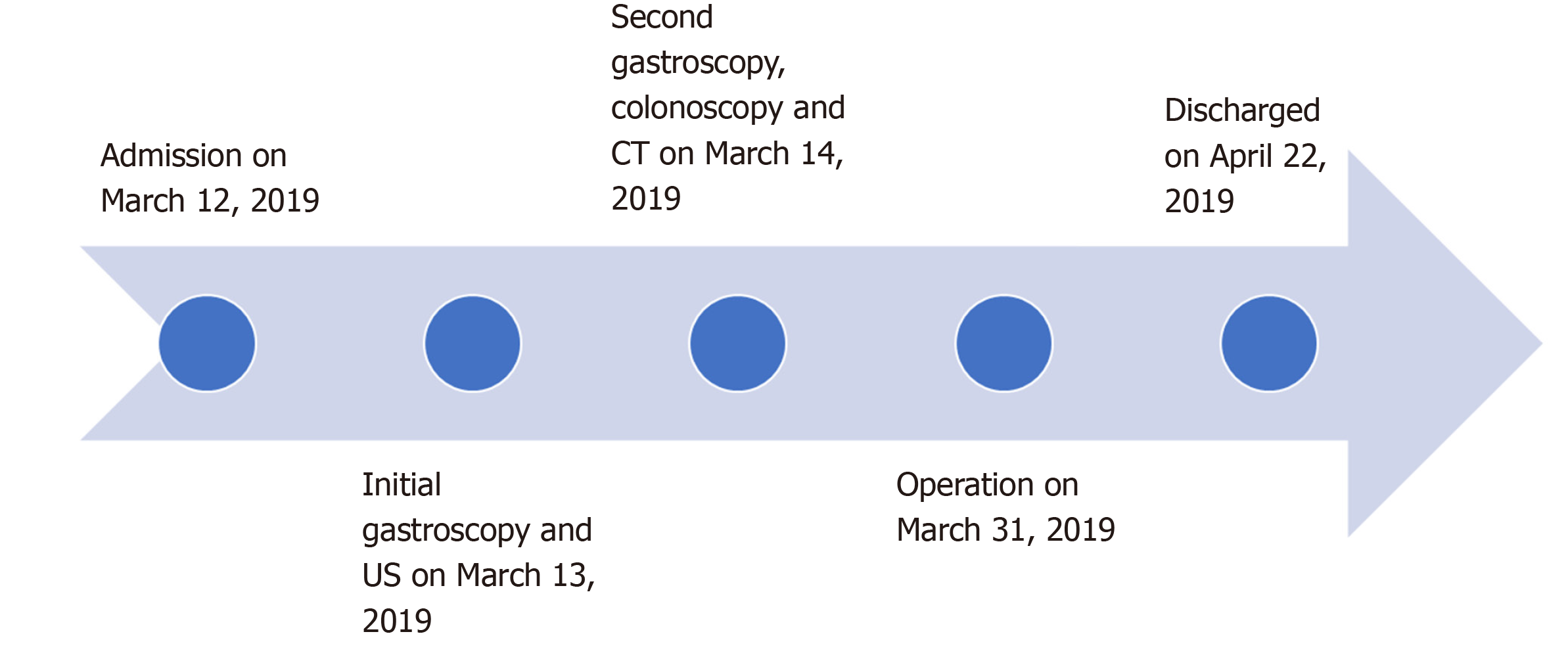Copyright
©The Author(s) 2020.
World J Gastroenterol. May 7, 2020; 26(17): 2119-2125
Published online May 7, 2020. doi: 10.3748/wjg.v26.i17.2119
Published online May 7, 2020. doi: 10.3748/wjg.v26.i17.2119
Figure 1 Endoscopy.
A: Colonoscopy showing linear ulcerations and a cobblestone appearance. B: Gastroscopy indicating the small orifice of the gastrocolic fistula (orange arrows), which manifests as a small ulcer.
Figure 2 Computed tomography.
Computed tomography of the abdomen demonstrating the complex multilocular structure adherent to the greater curve of the stomach in the patient’s left lower abdomen, with fluid, gas and significant surroundings (orange arrows).
Figure 3 Ultrasound.
A: Transverse Doppler sonogram through the stomach demonstrating the hypoechoic fistula wall at the section of the short axis of the stomach (orange arrows). Limberg grade II blood signals can be observed. B: Oral agent contrast-enhanced ultrasound showing the hyperechoic gas passage connecting the splenic flexure of the colon to the greater curvature of the stomach (orange arrows).
Figure 4 Timeline information in this case report.
CT: Computed tomography; US: Ultrasound.
- Citation: Wu S, Zhuang H, Zhao JY, Wang YF. Gastrocolic fistula in Crohn’s disease detected by oral agent contrast-enhanced ultrasound: A case report of a novel ultrasound modality. World J Gastroenterol 2020; 26(17): 2119-2125
- URL: https://www.wjgnet.com/1007-9327/full/v26/i17/2119.htm
- DOI: https://dx.doi.org/10.3748/wjg.v26.i17.2119












